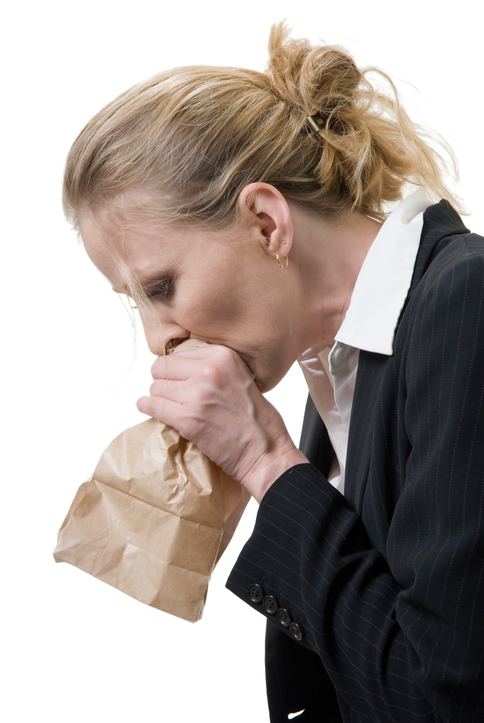
Hyperventilation
When a person under stress breathes very quickly, the level of carbon dioxide in the blood becomes too low. This causes the condition known as hyperventilation. Symptoms include a feeling of numbness or panic, a tingling sensation in the feet and hands, muscle tension, and dizziness. The victim should be kept calm. Try to restore normal breathing patterns by having the victim breathe into a PAPER bag held over both the nose and mouth. The victim should continue breathing into the bag for 5 to 10 minutes to reestablish normal blood levels of carbon dioxide.
Heat Stress
A person may suffer from heat disorders when the temperature and humidity increases. When the external air is hot and humidity is high, athletes’ bodies are not able to cool by evaporation, so they may experience heat disorders, such as cramps, heat exhaustion, and heat stroke.
Look at the Heat Stress chart below:
| Indicators |
Heat Cramps |
Heat Exhaustion |
Heat Stroke |
| Cause |
Salt and water loss |
Salt and water loss |
Failure of heat regulating mechanisms |
| Cramping |
Present |
May be present |
Absent |
| Skin |
Cool, moist |
Cool, pale, moist |
Hot, flushed, dry |
| Temperature |
Normal |
Normal or low |
Very high |
| Pulse |
Rapid |
Rapid, weak |
Rapid, pounding |
| First Aid |
Give salt water solution, if tolerated by the victim |
Cool, put in reclining position, elevate legs, give salt water solution if victim is conscious |
Cool body rapidly, put in semi-reclining position, seek medical assistance |

Frostbite
Frostbite is the most common injury resulting from exposure to cold elements. Usually, the frozen area is small. The nose, cheeks, fingers, toes, and ears are most commonly affected. The extent of injury caused by exposure to abnormally low temperature generally depends on such factors as wind velocity, type and duration of exposure, temperature, and humidity.
Care for frostbite:
| 1) Cover the frozen part. |
| 2) Bring the victim indoors as soon as possible. |
| 3) Give the victim a warm drink. |
| 4) Re-warm the frozen part in warm water. |
| 5) Do not rub the frozen part. |
| 6) Do not break blisters. |
| 7) If the feet are affected, do not allow the victim to walk. |
| 8) If fingers or toes are involved, place dry, sterile gauze between them to keep them separated. |
| 9) Obtain medical assistance as soon as possible. |


